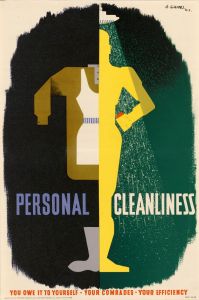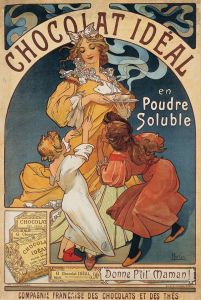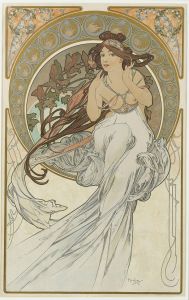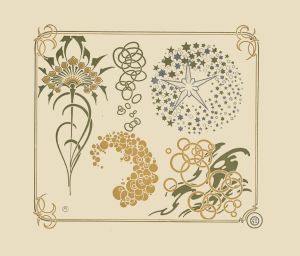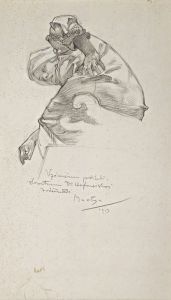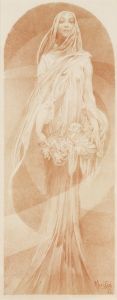
Menu Card
A hand-painted replica of Alphonse Mucha’s masterpiece Menu Card, meticulously crafted by professional artists to capture the true essence of the original. Each piece is created with museum-quality canvas and rare mineral pigments, carefully painted by experienced artists with delicate brushstrokes and rich, layered colors to perfectly recreate the texture of the original artwork. Unlike machine-printed reproductions, this hand-painted version brings the painting to life, infused with the artist’s emotions and skill in every stroke. Whether for personal collection or home decoration, it instantly elevates the artistic atmosphere of any space.
Alphonse Mucha, a Czech painter and decorative artist, is renowned for his distinctive style that became synonymous with the Art Nouveau movement. One of his lesser-known works is "Menu Card," which exemplifies his unique approach to design and illustration. Although specific details about this particular piece are scarce, Mucha's broader body of work provides context for understanding its significance.
Alphonse Mucha was born on July 24, 1860, in Ivančice, Moravia, which is now part of the Czech Republic. He moved to Paris in 1887, where he became involved in the burgeoning Art Nouveau movement. Mucha's work is characterized by its intricate lines, organic forms, and harmonious compositions, often featuring beautiful women surrounded by lush, decorative elements. His style became widely recognized through his poster designs for the famous actress Sarah Bernhardt, which catapulted him to fame in the 1890s.
The "Menu Card" by Alphonse Mucha likely served a functional purpose while also showcasing his artistic flair. During the late 19th and early 20th centuries, menu cards were not only practical items used in restaurants and at events but also opportunities for artists to display their creativity. Mucha's involvement in creating a menu card would have aligned with his interest in applied arts and his belief that art should be accessible to all, integrated into everyday life.
Mucha's menu card designs would typically feature his signature elements: elegant female figures, floral motifs, and a harmonious color palette. These elements combined to create a sense of luxury and sophistication, elevating the simple menu card to a work of art. The use of flowing lines and natural forms in his designs reflects the Art Nouveau ethos, which sought to break away from the rigid structures of traditional art and embrace a more organic, holistic approach.
While specific information about the "Menu Card" is limited, Mucha's broader impact on graphic design and the Art Nouveau movement is well-documented. His work influenced a generation of artists and designers, and his legacy continues to be celebrated today. Mucha's approach to art was holistic; he believed that art should be a part of everyday life, and his work in various mediums, including posters, jewelry, and interior design, reflects this philosophy.
In summary, while detailed information about Alphonse Mucha's "Menu Card" is not readily available, it can be appreciated within the context of his overall artistic contributions. Mucha's work exemplifies the Art Nouveau movement's ideals, characterized by beauty, elegance, and a seamless integration of art into daily life. His legacy endures as a testament to the transformative power of art and design.





